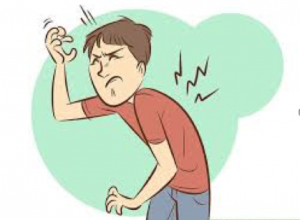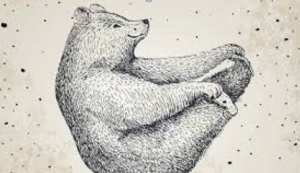 Sometimes unwanted posture just happens, and no matter how many times we are reminded to “stand-up straight” or “roll your shoulders back” it happens again and again–not because of laziness, but because we can’t help it. There can be many reasons for certain postures we take on but you’ll be amazed to hear that much of it has to do with tired and weakened feet–caused by the shoes we wear.
Sometimes unwanted posture just happens, and no matter how many times we are reminded to “stand-up straight” or “roll your shoulders back” it happens again and again–not because of laziness, but because we can’t help it. There can be many reasons for certain postures we take on but you’ll be amazed to hear that much of it has to do with tired and weakened feet–caused by the shoes we wear.
In an effort to minimize painful symptoms stemming from weak feet, we find ways to move and stabilize by folding our torso, bending our hips, rolling shoulders inwardly, or lifting a heel, etc. –all seemingly helpful, until these parts of the body fatigue from the effort and break down too –subsequently the brain, with nowhere else to draw energy to move the body, fills with stress and despairs on how to find balance again. The challenge in all of this is most times we don’t even realize our body is compensating and seek for ways to sooth secondary symptoms of bodily strain and stress, when in truth, the feet are often the primary root of the matter. In many cases once foot tension and alignment is restored problematic areas in other parts of the body resolve too.
One of the ways to change your posture is to understand how your feet carry your body– because your body responds to each incremental movement your feet make. Deviations from normal foot function and foot misalignment will greatly contribute to postural compensations so it’s good to know how feet distribute weight.
Distribution of weight is the control of contact pressure made by the sole of the foot on the ground as load moves through the foot during locomotion and is managed by 17 muscles, 13 of which attach to the foot from the lower leg. The success and vitality of weight bearing is determined by how well the 38 joints in each foot are able to adapt as these foot muscles direct weight from heel to toes. As long as feet receive weight in certain fashion the upper body has no need to compensate because the foot takes charge of managing weight distribution and locomotion. Once weight strays from the part of the foot that is designed for this function, havoc begins and upper body muscles are recruited to engage and stabilize in an effort to find balance.
Follow along as I simplify appropriate and healthy weight distribution in six stages. Each phase of weight impacts the body.

6 stages of weight bearing
The outlined area is weight contact on the bottom of the foot during one healthy step.
From left to right-
Stage 1– When the foot lifts from the floor the pelvis tilts. As the heel contacts the floor it engages the pelvis and the muscles along the side of the leg become activated.
Stage 2– The pivotal movement of the talus bone (ankle) directs weight to the outer side of the foot which initiates the ball and socket of the hip joint to move in the same degree.
Stage 3– As weight makes contact with the mid-outer foot at the 5th metatarsal and cuboid bone, muscle power directs the foot from a supinated position to a slightly pronated position, and moves weight across the transverse arch (bridge of bones at the mid-foot). When weight is received by the 5th and then the 4th toe, the ball and socket of the shoulder and jaw joints benefit with this movement.
Stage 4– As weight is received by the transverse arch, the inner side of the foot springs and shock absorbs body weight–this action precipitates the spine of the body to mimic this movement, allowing the curves of the back to wave and sway in a propelling, upwardly motion. The effect of this spring-board-like action of the arch establishes efficient communication of neural signals from the spinal chord to the brain and back to glands, organs and muscles.
Stage 5– As weight reaches the balls of the foot the upper chest and back receive a cushion of impact provided by the toe extensors and interoseus muscles between the metatarsals to keep vitality and momentum moving toward the neck and head. I like to call them the puffer muscles because of their cushioning effect.
Stage 6– The action of the flexor muscles of the great and small toes allow the toe joints to bend and glide, providing a tremendous foundation of strength to stabilize the chest, neck and head during this last process in this one step of movement.
The strength of toes 4 and 5 will determine the structural ability to keep shoulders, neck and head stable and in the line of gravity in the process of movement.
The strength of toes 1,2 and 3 will determine the elasticity and flow of the cervical vertebrae. Each toe share equal weight descending from the 5th toe to the great toe before the spring muscles of the great toe and arch thrust the foot off the ground.
If any of these stages of foot movement are interrupted while you walk, you will soon notice the part of the sole that does not connect to the ground as it should will cause another part of your body to ache.

Know and take care of your feet and they will reward your entire body.
Read more in Put Your Best Feet Forward
Archives
- October 2024
- December 2023
- October 2023
- March 2022
- July 2021
- August 2020
- May 2020
- April 2020
- February 2020
- January 2020
- December 2019
- November 2019
- October 2019
- August 2019
- June 2019
- May 2019
- April 2019
- January 2019
- December 2018
- October 2018
- September 2018
- July 2018
- June 2018
- April 2018
- February 2018
- December 2017
- November 2017
- October 2017
- September 2017
- August 2017
- July 2017
- June 2017
- May 2017
- April 2017
- February 2017



2 Responses to The Zen of Taking One Step